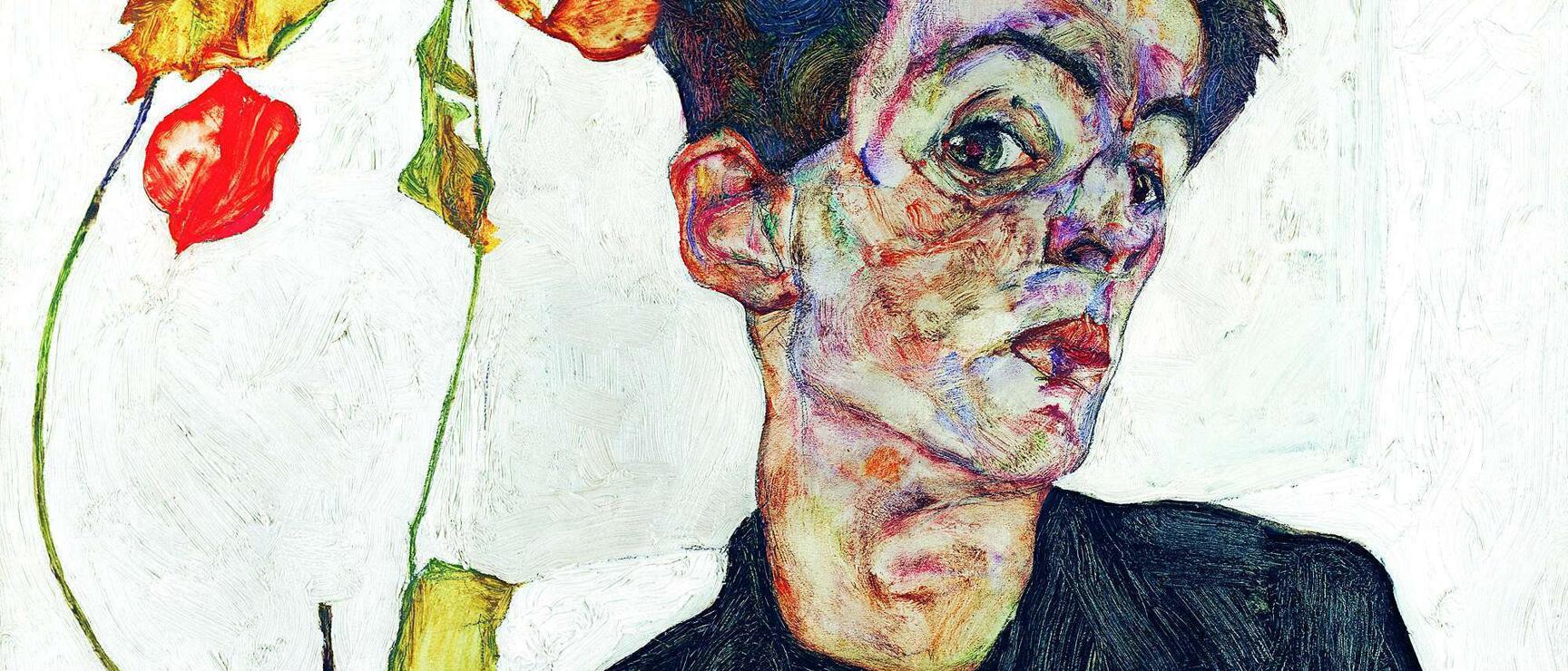
Egon Schiele
Expressionist painter
Egon’s first favourite subject was trains. As the son of a stationmaster, he grew up in a world full of trains and locomotives, which influenced his art from an early age. The family lived in the apartment above Tulln station, so young Schiele could observe the trains directly from the window and spent hours drawing them. From a young age, drawing and painting were his favourite activities.
At the age of 12, he attended the grammar school in Klosterneuburg. Fortunately, he met art teacher Ludwig Karl Strauch, who recognised and supported his artistic talent. Klosterneuburg had a very active art scene at the time, and through Strauch, Schiele was able to enter a whole new world and make contact with other artists. During his years in Klosterneuburg (1902 to 1906), he decided on his career path: from then on, he wanted to become a painter.
At 16, Schiele moved to Vienna to study at the Academy of Fine Arts. However, he soon found the conservative teaching uninspiring, and his professor at the time, Christian Griepenkerl, was equally unimpressed with his student. After three years, Schiele left the academy and, together with a few fellow students, founded the artist group “Neukunstgruppe.”
In Vienna, he had some of the most important encounters of his life: he met his role model Gustav Klimt, his girlfriend and muse Wally Neuzil, and his future wife Edith Harms.
In 1918, Egon Schiele died at the age of 28 in Vienna from the Spanish flu, leaving behind a rich body of graphic work.
His paintings and drawings now achieve record prices at international auctions.
€27.6 million – this was the highest auction price ever achieved for a Schiele painting at Sotheby’s in London. It was not one of his famous nudes, but a landscape.
Meet Egon Schiele
Landscapes & cityscapes
Egon Schiele was born in 1890 in Tulln an der Donau – a picturesque region with vineyards, onion-domed towers and Baroque monasteries. Yet this idyllic setting is hardly reflected in his work.
Instead, many of his landscapes appear melancholic, sometimes sombre. Perhaps he was processing the early death of his father or deliberately seeking a break from traditional painting. Schiele often depicted narrow rows of houses, winding alleys, riverbanks or forests – empty and quiet, sometimes with a morbid touch. These landscapes add a special depth to his oeuvre: his clear choice to paint either a figure or a landscape makes them unique.
Portraits and figures
His depictions of the human body are often painted in bright colours, bold in style and placed in isolation against a neutral background. Often sketch-like, Schiele focused on the contours.
Modernist Vienna was marked by a cultural shift – moving away from bourgeois prudery towards freedom from moral constraints. During this period, Sigmund Freud wrote his Three Essays on the Theory of Sexuality, and Schiele developed his distinctive expressionist style within this charged Viennese atmosphere. His portrayals of sexuality made him one of the most provocative artists of his time. In 1912, the Neue Presse wrote: “His deviations are among the most repulsive things ever seen in Vienna.” His grotesque figures and nude paintings – both male and female – shocked audiences. Yet Schiele was undoubtedly convinced of his art: “Even the erotic work of art has its sanctity.”
Small towns and nature
Throughout his life, Egon Schiele often chose small towns as places to live: first Krumau and later Neulengbach in the Vienna Woods (Lower Austria).
The Vienna Woods, then as now, is a region of gentle hills, forested slopes and small villages set in greenery, yet not far from Vienna. This advantage must also have appealed to Schiele in his search for a better quality of life. Here, the painter withdrew, enjoying nature and working undisturbed, away from the noise of the big city. During this period, important works such as The Hermits, Raven Landscape and Mourning Woman were created, along with many expressive landscapes and tree portraits, including Autumn Tree in a Breeze.
Following in Schiele's footsteps
Art that remains
Two places that shaped Egon Schiele – and remain vibrant today:
Stein an der Donau near Krems: Egon Schiele travelled to the Wachau several times, creating various studies of Stein an der Donau.
Klosterneuburg Abbey: Between 1906 and 1908, Schiele produced several oil studies based on motifs in Klosterneuburg, including The Abbey Joinery (1907).